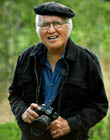|
|
This topic comprises 2 pages: 1 2
|
|
Author
|
Topic: Ghostbusters - 30 years later
|
Monte L Fullmer
Film God

Posts: 8367
From: Nampa, Idaho, USA
Registered: Nov 2004
|
 posted 08-28-2014 09:04 PM
posted 08-28-2014 09:04 PM




Doing the Thursday's advanced showing this evening and it's fun seeing this classic "buddy" comedy to return to the big screen where 30 years ago, I projected the original 35mm release that banner summer where "Ghostbusters" was competing against "Temple of Doom".
Later on that summer, Columbia hits another home run feature: "the Karate Kid"
First thing to hit the screen with this reissue, is the newer "Columbia" trademark when that brought back "the Statue of Columbia" back to the screen from using the "sunburst" trademark in the prior years, but before the takeover by Coca Cola..and then Sony Entertainment.
Sad is with this digital release is the image is still grainy as it was when I projected this film on the screen.
Sound, being Dolby "A" with the practice of reducing the output dB to reduce noise, where the operator had to turn up the fader to get a decent sound level in their respective houses still remains along with one can tell that this digital release used that original, four channel mix.
Outside of these noticeable issues that I became familiar with when I was projecting this film (we had the first SMART, four channel optical stereo system ever released) back in that summer of 1984, the feature is still fun to watch, and watch, and watch over again as I did - making it one of the rare features that I totally enjoyed watching.
After this film, the 1989 "Ghostbusters II" is one that can be forgotten and left in the can.
Yes, this was fun to watch again on the big screen and I've been telling the younger generation that they need to come see this film.
Yet, this film doesn't meet the demands for this new generation and will fade back into the cans, this time forever.
4 out of 5 for me.
-Monte
| IP: Logged
|
|
|
|
|
|
|
|
Monte L Fullmer
Film God

Posts: 8367
From: Nampa, Idaho, USA
Registered: Nov 2004
|
 posted 08-29-2014 11:18 PM
posted 08-29-2014 11:18 PM




quote: Marcel Birgelen
Was the DCP in 2K or in 4K
It's in 4K, but we presented it in 2K (Prob would see more grain if it was projected in 4K .. in which I'm glad we didn't have to present it in 4K the way the original graininess still existed.) due to we only have two houses that can do 4K, but they're occupying our two large houses.
I did talk to some of our employees who came today and see this film and they really like it - being it was the first time for them to see it, either on the big screen, or first time at all.
True, the latter part of the movie did go over the top and became a bit on the silly and boring side to where I was glad that it was over with, but all the rest is what I can still laugh at after all of these years.
I think that was the big draw on this film was the fact of three characters (sorry, Bernie was a distant fourth), with each having a distinct personality, and putting these personalities together, where it all blended perfectly, made this film and made the people laugh. Interesting is, that these three personalities were already in the story, thus no character development was never needed like you were already there.
It was like seeing "the Three Stooges" reborn.
quote: Marcel Birgelen
Actually, quite the opposite of the basic inner workings of most analog noise reduction schemes.
If I do remember, the early Dolby A processing had to have a lower output on the track for optical stereo processing (and that time, this Dolby stuff was all new and the technician explaining this to me on the SMART install wasn't the best in explaining on how this stuff works), but it was definitely the pits for us mono houses having to crank up the fader to get the sound out, but here comes the noise along with it.
| IP: Logged
|
|
Manny Knowles
"What are these things and WHY are they BLUE???"

Posts: 4247
From: Bloomington, IN, USA
Registered: Feb 2002
|
 posted 08-30-2014 03:09 PM
posted 08-30-2014 03:09 PM




quote: Monte L Fullmer
Sound, being Dolby "A" with the practice of reducing the output dB to reduce noise, where the operator had to turn up the fader to get a decent sound level
Pure nonsense. A properly installed Dolby theatre would've had a common reference fader setting for all formats.
quote: Monte L Fullmer
If I do remember, the early Dolby A processing had to have a lower output on the track for optical stereo processing (and that time, this Dolby stuff was all new and the technician explaining this to me on the SMART install wasn't the best in explaining on how this stuff works), but it was definitely the pits for us mono houses having to crank up the fader to get the sound out, but here comes the noise along with it.
Seems like part of your issues in 1984 involved using non-Dolby gear, an inexperienced tech, and a mono playback system. (Although, SMART processors are/were capable of handling Dolby tracks without requiring special volume offsets.) Even so, you're using a whole different playback system, so you shouldn't have the same issues as you did back then.
If any accommodation would've been necessary, I'd expect you had to turn the fader DOWN because of the HF pre-emphasis in the recording -- although I have not personally played Dolby-A in mono, so I'm just guessing.
| IP: Logged
|
|
|
|
|
|
|
|
Steve Guttag
We forgot the crackers Gromit!!!

Posts: 12814
From: Annapolis, MD
Registered: Dec 1999
|
 posted 08-31-2014 11:14 AM
posted 08-31-2014 11:14 AM




Sorry Manny...Monte got this one right. Dolby-A prints were recorded 3dB lighter than mono prints. They took advantage of the Dolby-A noise reduction to allow one not not add 3dB of noise while getting that 3dB back in the set up of the cinema processor.
The optical track, being rather limited in dynamic range, one normally had to record to it louder to get above the noise floor. However, with Dolby-A, the noise floor is effectively dropped allowing one to gain more dynamic range by lowering the recording level so it still fits in the available range of the optical track. Remember too, Dolby applies no compression/expansion above Dolby Level so the top is still the same top.
3dB is small enough that most any sound system can be varied enough to accommodate. Dolby processors had a "Mono" trim to effectively knock the mono track down 3dB though mono track levels were a bit more wild in level. Another benefit to the Dolby Stereo tracks was a great degree of uniformity between volume levels (in optical...because again, the level was still very restrictive).
Note, with Dolby-SR they took another 3dB of level shift because they once again, could get that back due to the increased dynamic range Dolby-SR brought about. However, it was incumbent upon the SR decoder system to have a suitable line amplifier to keep the level matched. This was done by the SRA-5 for Dolby...the SRM-10 for USL (though you had to add appropriate 1% resistors). Processors with on-board SR had it built in.
| IP: Logged
|
|
|
|
|
|
|
|
|
|
|
|
|
|
All times are Central (GMT -6:00)
|
This topic comprises 2 pages: 1 2
|
Powered by Infopop Corporation
UBB.classicTM
6.3.1.2
The Film-Tech Forums are designed for various members related to the cinema industry to express their opinions, viewpoints and testimonials on various products, services and events based upon speculation, personal knowledge and factual information through use, therefore all views represented here allow no liability upon the publishers of this web site and the owners of said views assume no liability for any ill will resulting from these postings. The posts made here are for educational as well as entertainment purposes and as such anyone viewing this portion of the website must accept these views as statements of the author of that opinion
and agrees to release the authors from any and all liability.
|

 Home
Home
 Products
Products
 Store
Store
 Forum
Forum
 Warehouse
Warehouse
 Contact Us
Contact Us




 Printer-friendly view of this topic
Printer-friendly view of this topic














![[Razz]](tongue.gif)



